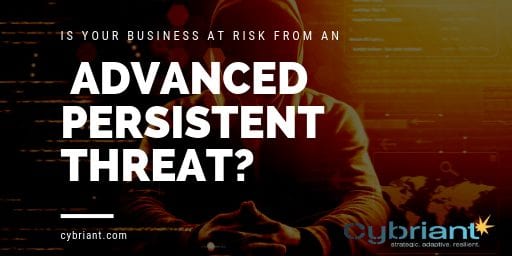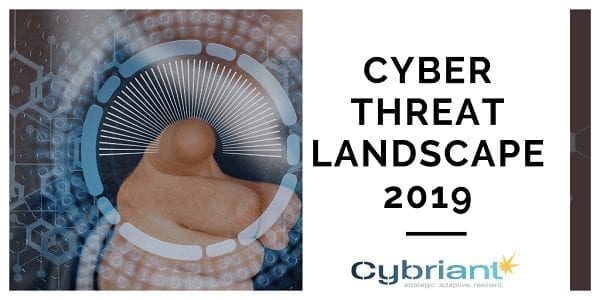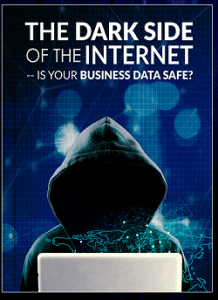Data breaches in healthcare are rampant in today’s cyber threat landscape. Is it possible to prevent them? Security must become ingrained in the strategy of the organization. Keep reading the following tips to ensure success.
Why instigate data breaches in healthcare? The reason is apparent that the pharmacies, hospitals, doctors, and clinics practices have valuable information. Healthcare organizations attract cybercriminals as they are goldmines of private, personal information. Thus, there is a need to protect securely the information.
How Can Companies Prevent Data Breaches?
Ensuring the security of sensitive information has become a top priority for companies across all industries. The threat of data breaches is constantly looming, which can have significant consequences in terms of financial losses and reputational damage. To prevent such incidents, companies must implement a robust cybersecurity framework that addresses potential vulnerabilities. This entails several measures such as regular software updates, multifactor authentication, employee training on safe online practices, and limiting access to sensitive data only to authorized personnel. By taking these measures, companies can protect themselves against potential data breaches and safeguard their reputation and integrity.
10 Ways to Prevent Security Breaches in Healthcare Sector
1. Ensure that all software is properly updated: Regularly updating your healthcare organization’s operating systems, medical devices, electronic health records, and other software can help prevent attackers from exploiting outdated vulnerabilities.
2. Implement strong authentication systems: Multifactor authentication (MFA), using two-factor or biometric authentication could help protect patient data against unauthorized access.
3. Train and educate employees on data security: Regularly providing training to employees in areas such as phishing prevention, password management, mobile device security, etc. can help reduce the risk of data breaches due to human error.
4. Limit access to sensitive data: Implementing least-privileged user access controls can limit the scope of a potential data breach by granting access only to those who need it.
5. Encrypt patient data: Encrypting sensitive EHRs and other PHI can help protect them from unauthorized access, even if attackers gain access to your system.
6. Monitor medical devices and IoT networks: Regularly monitoring connected medical devices and IoT networks can help identify potential vulnerabilities and malicious activities before they become a serious threat.
7. Conduct periodic risk assessments: Regularly assessing the security posture of electronic health records (EHRs), as well as other sensitive data can help organizations identify potential risks and take steps to mitigate them.
8. Implement physical security measures: Securing physical access to medical equipment and other assets, such as servers, can help protect against potential data breaches.
9. Implement robust backup plans: Regularly backing up EHRs and other sensitive data is a crucial step in ensuring that patient information remains safe even if there is a breach.
10. Prepare for the worst: Developing a comprehensive incident response plan can help organizations respond quickly and efficiently to any data breach that may occur. This includes contacting affected parties, conducting investigations, and providing support. Additionally, having a clear policy on what should be done if a data breach occurs can help healthcare organizations better protect their data in the wake of an attack.
Causes of cybersecurity breaches in healthcare
The causes of cybersecurity breaches in healthcare are the same as any other industry – lack of security protocols, human error, malware and viruses, weak passwords, and inadequate patch management. However, the healthcare sector faces additional challenges due to its vast array of legacy systems that are often challenging to secure. In addition, there is a huge amount of sensitive information stored in these systems which attackers may target.
Health Insurance Portability and Accountability Act (HIPAA)
Enacted in 1996, the Health Insurance Portability and Accountability Act (HIPAA) is a federal law designed to ensure that health information remains secure and private. HIPAA regulations include requirements for protecting patient data under the Privacy Rule, as well as data security standards under the Security Rule. These regulations establish specific safeguards that healthcare organizations must take to protect patient data from unauthorized access, use, and disclosure. HIPAA compliance is mandatory for any organization that handles PHI or electronic health records (EHRs).
Data Breaches in Healthcare
If you look at the healthcare wall of shame, it seems the healthcare industry shows a lax attitude toward security procedures.
This lax attitude makes data breaches in healthcare almost inevitable.
Based on the high amount of personal information available within healthcare organizations, a data breach will only devastate patients and providers. There is a need to prevent data breaches in healthcare and it means tightening the security. A few actions to shrink a data breach possibility:
Perform Yearly Assessment of Security Risk
There are a lot of things going on in an organization in 12 months. This involves infrastructure enhancements, integration of a new system, employee turnover, and organizational restructuring. It is prone to vulnerabilities to take place.
Performing yearly assessments of security risk helps the providers to review the protocols of security and to assess system vulnerability, besides understanding the security measures to be improved.
Learn about healthcare data breach impacts
Accepting the fact that not all the people working with healthcare data are tech-savvy, there is a need to be more careful. This is because less or a lack of knowledge may cause a security breach. The risk is high and acquiring proper technical knowledge should be made mandatory.
Educating employees on data breaches and their impacts is the foremost step to preventing the breach from happening. Educating employees or the amount spent on data security learning is an investment. The cyber attack risk is reduced only when there are educated employees.
Nicknamed the “Healthcare Wall of Shame” the U.S. Department of Health and Human Services must post a list of breaches of unsecured protected health information affecting 500 or more individuals, based on the HITECH Act. You can see the number of individuals affected, the type of breach, and the location of breached information.
Related: The Financial Industry’s Biggest Threat
Monitor records and devices
Constantly reminding employees about being mindful of using electronic devices and leaving unattended paper records is helpful.
Avoiding a healthcare data breach also involves paper records getting stolen. Thus, safeguarding a patient’s information is everyone’s responsibility, and the employees must ensure to keep data safe.
While security awareness training is important, the service has proven to be more effective in managed endpoint detection and response.
By managing the endpoints and having the ability to prevent malware from executing, it’s possible to prevent data breaches in healthcare.
Install hardware and encryption of data
Encryption is critical to prevent data breaches in healthcare. It is the best way of safeguarding data. There is a need to ensure data is not accessed and so encrypting patient information is a must. Besides, the vulnerable hardware such as network endpoints, servers, medical devices, and mobile is the right decision.
Implementing data encryption is a must. Money spent on the protocols of encryption will soon outweigh government penalties, legal fees, forensics, negative publicity, and potential lawsuits that run into millions.
Restricting patient information
The healthcare environment always has many hands working and patient information is always in use. This is the reason it is important to limit access to data and to manage carefully the user’s identity.
Controlling access to information is rightly done by logging on and off the machines that are shared. These are safe methods that help in identifying a computer that is logged in or left unattended. Running automation helps to check these protocols and ensures safety and efficiency for that involved.
Modernize IT Infrastructure
A common scene in hospital environments is outdated computer hardware. The healthcare environment must have secure equipment. It is observed that even today in many hospitals Windows XP is in use. Microsoft has already ceased support for XP and there are no new patches of security available. It means with XP users the healthcare data breach is open.
There is a need to realize the importance of healthcare data. Hospitals have sensitive information and are data banks. If someone breaches and lays a hand over a confidential medical record, it will be a disaster for the healthcare system.
Patching is vital, especially in older equipment. A Managed patching and vulnerability service could help prevent data breaches in healthcare.
Invest to defend networks
The truth is that hospitals require more doctors and nurses, but there is a need for supportive hospital administration. There is a need to be careful of the medical data and to take preventive measures to safeguard the data.
Preventing cyber attacks implies that healthcare should invest in defending networks so that there is no data breach. The healthcare data should not be mitigated and so ensure your staff is vigilant and aware of data protection.
When you start with the security strategy, you can create a framework for all security-based decisions. Read more about People, Processes, and Technology here.
Subnet wireless networks
Nowadays, offering Wi-Fi as free access has become common. Hospitals are also offering the same. The key is to ensure the patients are not stranded and the Wi-Fi access allows them to access their requisites.
Offering patient Wi-Fi access is not wrong, but it should be done by creating subnetworks. Creating a subnetwork means it will be reserved for public use and permit restricted access to guest users. Creating more subnets for apps to know healthcare information, for business applications, and apps involving a monetary transaction is also essential. Subnetworks are recommended so that the healthcare data network is safe and secure in an encrypted form and there is no data breach.
Implement BYOD policy
Smart devices use is on the increase and aids doctors remotely. This is convenient but is also a threat to the IT departments that wish to safeguard the healthcare environment.
Thus, it means following a policy of BYOD ‘bring your device’. This will keep the IT associates and the employees aware of the devices that will be in use internally and externally. Also, draw a strict outline to adhere to the BYOD so that there is no healthcare data breach.
Remote smart device use comes with increased risk. Be sure to have endpoints secured through a managed endpoint service.
Hire a Cyber Team for Incident Response
There is a need for an expert cyber team as a standby representative. You must be ready for the worst if there is a data breach. If you aren’t able to prevent a data breach, you’ll reduce the negative effect of the breach when you have an incident response team standing by.
Protecting patient data with tight network advanced security helps in detecting the indicators and also in responding before the attack starts. Any sort of neglect cannot be acceptable in healthcare. Regardless of what happens, accepting the situation is best, and dealing with it during sensitive circumstances is possible only by an expert cyber team.
Learn more about Incident Response and Incident Containment Services.
How Can Data Breaches Be Prevented?
Preventing data breaches is essential in the digital world we live in to protect sensitive data and valuable information. System monitoring, training employees on cyber security, encrypting data, firewalls, and threat detection can all contribute to the prevention of a data breach.
By paying attention to detail and implementing strong prevention practices, businesses can improve their security system and protect customer or corporate data. Educating staff on cyber security systems and common threats will create an awareness that can help prevent a possible breach before it even gets started.
Additionally, updating systems regularly, using encryption techniques to store data safely, and using secure authentication protocols are all prevention strategies that should be taken seriously by businesses. Ultimately, the prevention of a data breach is key for keeping a valuable company or customer information safe from malicious attacks.
Data Loss Prevention DLP Solutions: Everything You Need to Know










